The Great Dane is a giant dog that combines nobility with resilience, and strength with elegance. He has dignity, strength, and grace. This breed is the tallest of the large dog breeds at the withers, is large in size, and has a well-formed muscular body. The Great Dane is known as a benevolent giant and does not display unreasonable aggression.
This breed is gentle, loyal, affectionate, and patient; this makes her a great family dog. This makes it the perfect companion for children. A dog will adapt well to city life if given plenty of space and exercise.
- Life expectancy: 7-8 years
- Learning ability: High
- Number of puppies: 7-12
- Size: giant
- Weight: 50-82 kg
- Height at withers: Males from 80 cm, females from 72 cm
- Country of origin: Germany
- The color of the coat is fawn, brindle, marble, black, blue
History of the Breed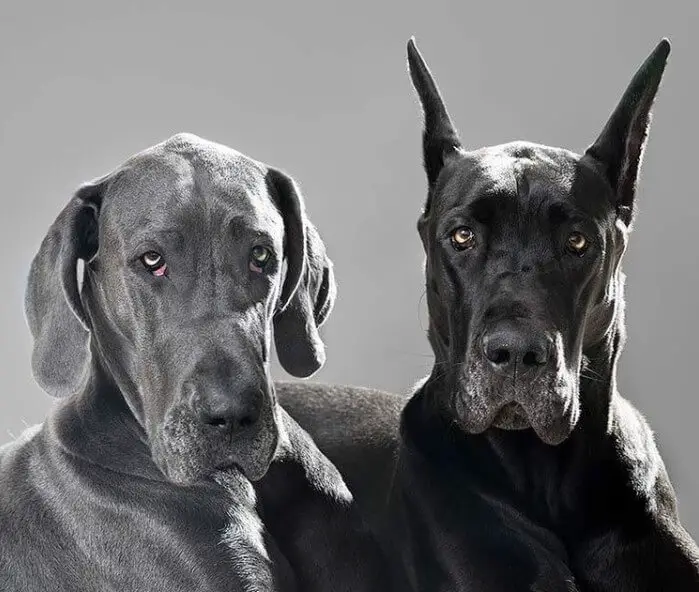
Drawings of dogs similar to Great Danes have been found on Egyptian artifacts dating back to 3000 BC. and in the Babylonian temples, which were built around 2000 BC. There is evidence that such dogs originated in Tibet. Written reports of such dogs appear in Chinese literature in 1121 BC.
It is believed that the breed was introduced to different parts of the world by the Assyrians, who traded their dogs to the Greeks and Romans. Then the Greeks and Romans bred these dogs with other breeds. The ancestors of the English Mastiff probably played a role in the development of the breed, and some people believe that the Irish Wolfhound may have played a role as well.
Great Danes were first called the boar race because boars are what they were bred to hunt for. Their ears were cropped to prevent the boars’ tusks from ripping them off. In the 16th century, the breed’s name was changed to “Great Dane”.
However, in the late 1600s, many German nobles began to keep their largest and most beautiful dogs in their homes, calling them Kammerhunde. These dogs were petted and they wore gilded collars lined with velvet.
No one knows exactly how and why Great Dane became associated with Denmark. (In Germany they are called the Great Dane, or “German dog”.).
Throughout the late 1800s, wealthy German breeders continued to refine the breed. They turned their attention to dog temperament because they had aggressive, angry temperaments due to the fact that they were first bred to hunt wild boar, especially a ferocious beast. These breeders tried to make the animals more gentle and – luckily for us today – they succeeded.
Personality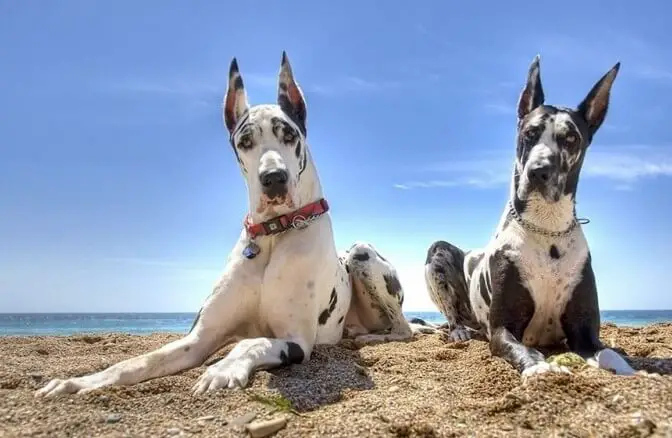
A well-bred Great Dane is one of the softest dogs. They are gentle, cute, affectionate animals that love to play and relax with children. They have a great desire to please you, which makes them easy to learn.
The Great Dane wants to be where the family is. They really like people, including strangers and children, and will gladly receive visitors if they don’t feel like you need to be protected. Then they can defend violently.
Good-natured Great Danes certainly need early socialization – being surrounded by many different people, sights, sounds, and experiences – when they are young. Socializing helps your puppy grow into a good, calm dog. Regularly inviting guests, as well as taking the dog to crowded parks, shops that allow dogs to enter, and leisurely walks to meet neighbors, will also help them adjust their social skills.
- Sweet, playful friend
- Communicates well with children
- Confident, steady, and fearless
- Good watchman with loud barking
- Energetic, active, and athletic
- Takes up a lot of space due to its massive size
- Can be “rabid”, especially at a young age
- Prone to anxious separation
- There may be a lot of salivae
- Can be aggressive, cowardly if socialized incorrectly
Feeding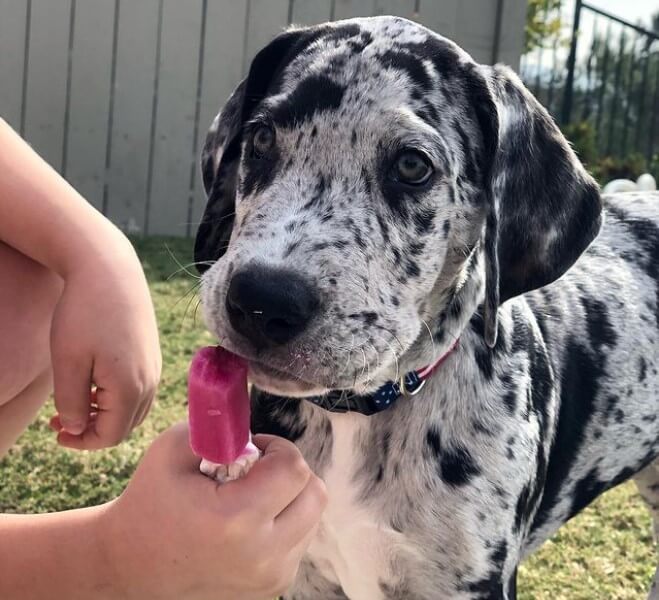
Diet is more important for a fast-growing giant breed puppy like the Great Dane than for other breeds. A Great Dane puppy should not eat regular puppy food as it is usually too small for them; they need puppy food intended for large breeds.
Assuming you are giving your puppy quality food, the amount you give is highly dependent on age and gender. You should consult a veterinarian or dietitian for nutritional advice appropriate for your dog. However, the generalized daily feed amounts are as follows:
- Three to six months: females, three to six cups; males, four to eight cups
- Eight months to one year: females, five to eight cups; males, six to ten cups
- Adolescents: females, eight cups; males, nine to fifteen cups
- Adult females, six to eight cups; males eight to ten cups
By the age of four to five months, a Great Dane puppy should have three meals a day. After that, give him two meals a day for life. They should never have only one meal a day.
Care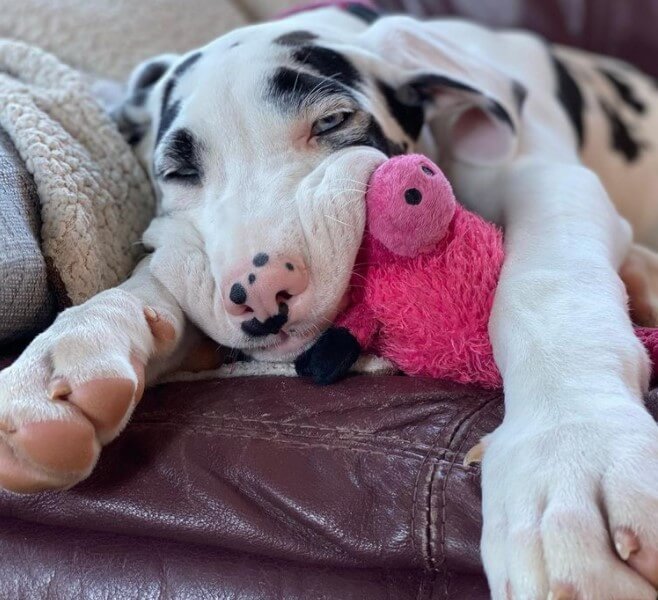
They shed a lot, but their coat is easy to keep in excellent condition with regular brushing. Use a thick brush. Regular brushing keeps your Great Dane’s coat healthy and clean and also reduces the need for bathing. As you can imagine, bathing a Great Dane is not an easy task, especially if they are not expecting it. It is difficult to imagine how they hide under the kitchen table, trying to avoid water procedures, but it happens.
Weekly brushing with a medium bristle brush, rubber glove, or maintenance tool will help minimize shedding. During the shedding season, once or twice a year, hair loss will be more abundant, daily brushing is ideal during this period. As with all breeds, nails should be trimmed regularly, as nails that are too long can cause pain for the dog as well as difficulty walking.
Start teaching the Great Dane to be cleaned and examined when he is a puppy. Take care of your paws more often and check your mouth. Make grooming a rewarding experience filled with praise and rewards, and you will lay the foundation for light veterinary examinations and other work as adults.
They can catch a cold in winter, so they should not be left outside in colder climates. In fact, they need to wear a sweater or fleece coats to keep them warm when they go for a walk in winter climates.
They are relatively quiet indoors but require a long walk at least once a day, or a large yard to play. An adult Great Dane needs 30 to 60 minutes of daily practice, depending on age and activity level. Puppies and adolescents require about 90 minutes of exercise per day.
While you may want yourself a running partner, wait to run when the Great Dane is at least 18 months old. To this, their bones are still growing, and they simply cannot do everything. In fact, your dog may not be ready for jogging until two years old.
Health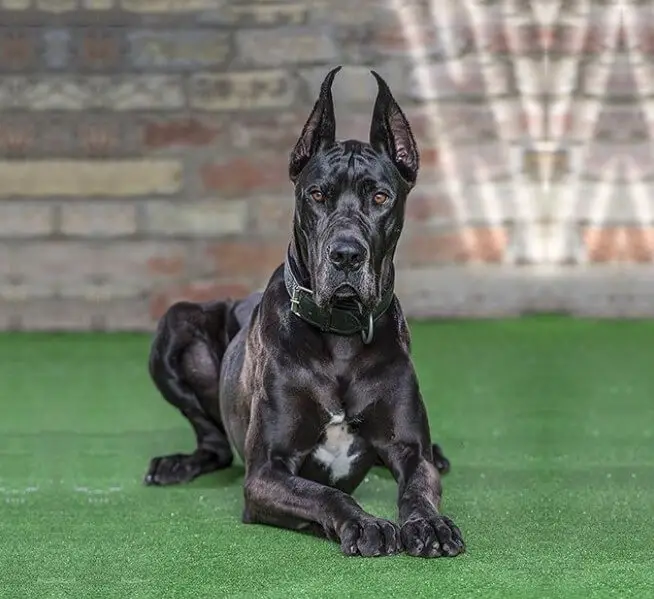
Great Danes are generally healthy, but like all breeds, they are prone to certain health conditions. Here are some of these conditions to watch out for:
- Developmental problems: These problems can develop in puppies and adolescents. They are sometimes associated with poor nutrition – often a diet too high in protein, calcium, or supplements.
- Hip dysplasia: This is a hereditary condition in which the hip bone does not fit snugly into the hip joint. Some dogs show pain and lameness in one or both hind legs, but others show no outward signs of discomfort. X-ray screening is the surest way to diagnose a problem. In any case, arthritis can develop at any age of the dog. Dogs with hip dysplasia should not be bred.
- Volvulus: Also called bloating. This is especially true for situations where they are being fed one large meal per day, when dogs are fast eating, drinking large amounts of water after meals, and exercising vigorously after meals. Bloating is more common among older dogs. It occurs when the stomach is swollen with gas or air and then curls up (volvulus). The dog is unable to regurgitate or induce vomiting to deprive itself of excess air in the stomach and thus interferes with the normal return of blood to the heart. The blood pressure drops and the dog goes into shock. The dog can die without immediate medical attention. Consider bloating if your dog has a bloated belly and excessive salivation. They can also be restless, depressed, lethargic, and weak, with a fast heartbeat. It is important to get your dog to the vet as soon as possible if you see these signs.
- Bone cancer: Sometimes known as osteosarcoma, this is the most common bone tumor found in dogs. It is usually seen in middle-aged to older dogs, but large breeds such as the Great Dane tend to develop tumors at a young age. The first sign is lameness, but the dog will need an x-ray to determine if cancer is the cause. Osteosarcoma is treated aggressively, usually with limb amputation and chemotherapy. With treatment, dogs can live from nine months to two years or more.
- Heart disease: Heart disease affects Great Danes; varieties include dilated cardiomyopathy, mitral valve defects, tricuspid valve dysplasia, subaortic stenosis, and persistent right aortic arch. Prognosis and treatment vary depending on the specific disorder and the age of the dog and overall health.
- Hypoadrenocorticism (Addison’s disease): Addison’s disease is an endocrine system disorder that occurs when the adrenal glands do not produce enough hormones for the body to function normally. If left untreated, hypoadrenocorticism can be fatal. Symptoms often mimic many other conditions, but we can do a specialized blood test to check for this particular condition. Although this disease can occur in any type of dog, Great Dane is at greater risk.
- Great Danes are prone to a common condition called hypothyroidism, in which the body does not produce enough thyroid hormone. Signs may include dry skin and coat, hair loss, susceptibility to other skin conditions, weight gain, anxiety, aggression, or other behavioral changes.
Conclusion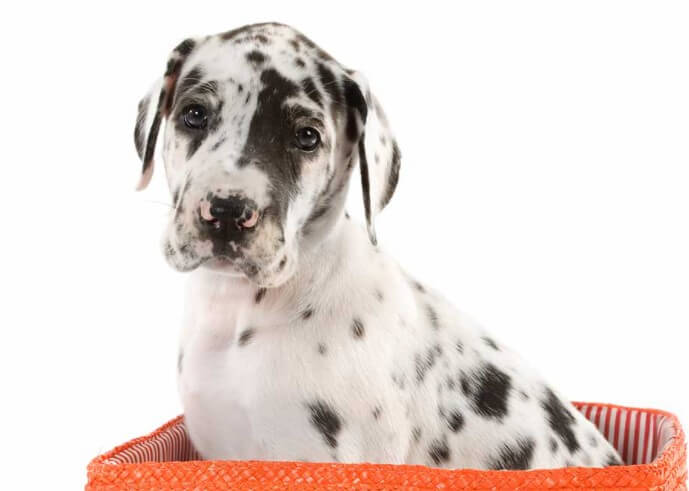
Generally speaking, the Great Dane will get along with other pets and children at home, but some can be aggressive at times. They are brave, loyal, sometimes unstoppable, but with proper socialization and training, they are really gentle giants.
